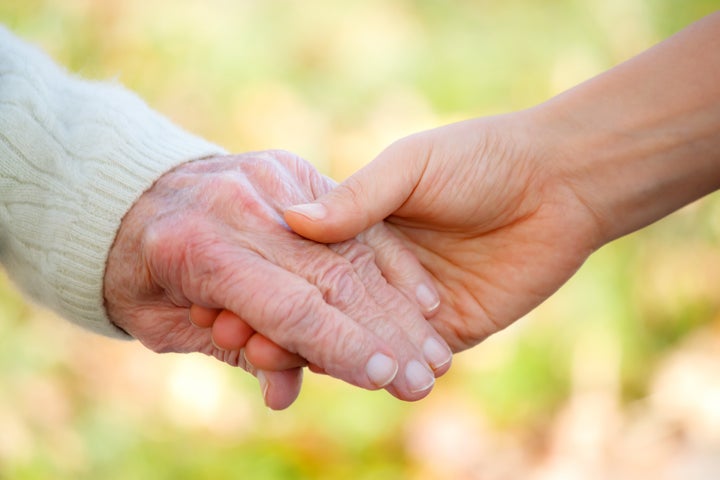
Regardless of our respective political leanings, we all can agree that the 2012 election cycle can only be characterized as historic. When the confetti cleared in the wee hours of Nov. 7, 19 women found themselves holding positions as newly-elected officials. Whether on the ticket or at the campaign rallies, women and women's issues played crucial and decisive roles in this campaign cycle. Reproductive health took center stage, followed closely by issues related to fair pay and marriage equality. What failed to make the news feed? Caregiving. The persistent invisibility of caregivers and the lack of attention paid to their fiscal, emotional, and medical needs are not just political issues, they are women's issues.
Of the 65 million caregivers in America, more than 60 percent are women. For many of these women, care providing is not their first or last daily responsibility. They hold down full- or part-time jobs either in or outside the home, they are active in their community and spiritual centers, and they may be caring for more than one individual. The popular neologism "the Sandwich Generation" describes people caring for elderly parents in addition to raising families. What if that same household includes multiple generations -- a child and a grandparent, for example -- requiring additional care? The answer to that question is one that many in the care community (myself included) are working hard to change, because the outcome inevitably involves emotional burn out, increased health problems, and a substantial erosion of happiness, pleasure, and social connection.
Despite the very real stressors placed on care providers -- financial constraints further exacerbated by a fragile economy, lack of adequate medical resources, which should have held focus in relation to the ongoing debate around new health care measures, and the impacts caregiving takes on women attempting to advance professionally -- a thoughtful discussion about caregiving remained absent from any election stage. Why? Part of the answer is connected to the characterization of the caregiver as "invisible." The needs of the individual take precedent over the caregiver's needs, causing her to become less and less vocal about requiring help or support. In the 21st post-feminist era, no woman wants to be seen as "weak," "helpless" or incapable of "handling it all." Along these lines, caregivers, especially those who are moms caring for unaffected family members, infrequently characterize their care providing role as distinct from the labor they perform managing the rest of the household. The many caregiver moms I work with express similar sentiments that caring for their affected child is "just what every mom does" -- it becomes marbleized into their gender identity. However, treating caregiving in this fashion increases the atmosphere of silence around the impacts of long-term care providing. In other words, it is an attitude that enables caregiving to persist in a culture of invisibility.
The momentous surge of women into elected office is an opportunity to significantly change this perception, to promote a sense of urgency to Washington about the issues facing caregivers, to make caregiving and caregivers part of the national political and social dialogue. Here are three places to begin:
1.More Education: The public needs to be more educated about caregivers and their experiences. Increased funds for organizations and programs devoted to servicing the caregiver may increase their efforts to help Americans understand that care providing effects everyone and will also aid in granting more visibility to the care providers in every family.
2.New Outreach: New approaches to reaching caregivers who need support. My program, HerSelf First, offers creative outreach designed to help women caregivers connect with one another and also connect with their sense of self, to nurture self-worth, to practice self-expression, and to reconnect with personal goals and interests. Caregivers need more than information on proper nutrition and wellness; they need outlets, forums, communities, and tools to sustain and build on personal areas that provide wellbeing apart from their roles as caregivers.
3.Fresh Perspective: We need to see our caregivers with fresh eyes. These people are not "just" mothers or fathers, they are complex beings with individual needs, hopes, and pursuits. For those caregivers who are women, we owe it to them to acknowledge their stories and experiences as women first and foremost, to respect the nuances their gender provides in taking on the caregiving journey.
The end of the campaign cycle this November, which also happens to be National Family Caregiver's Month, marks the beginning of renewed energy to effect positive change. It is a crucial time for women in positions of power to be political pioneers and exemplars in giving long overdue attention and consideration to the growing demographic of their caregiver constituents.
For more by Sheila Moeschen, click here.
For more on caregiving, click here.